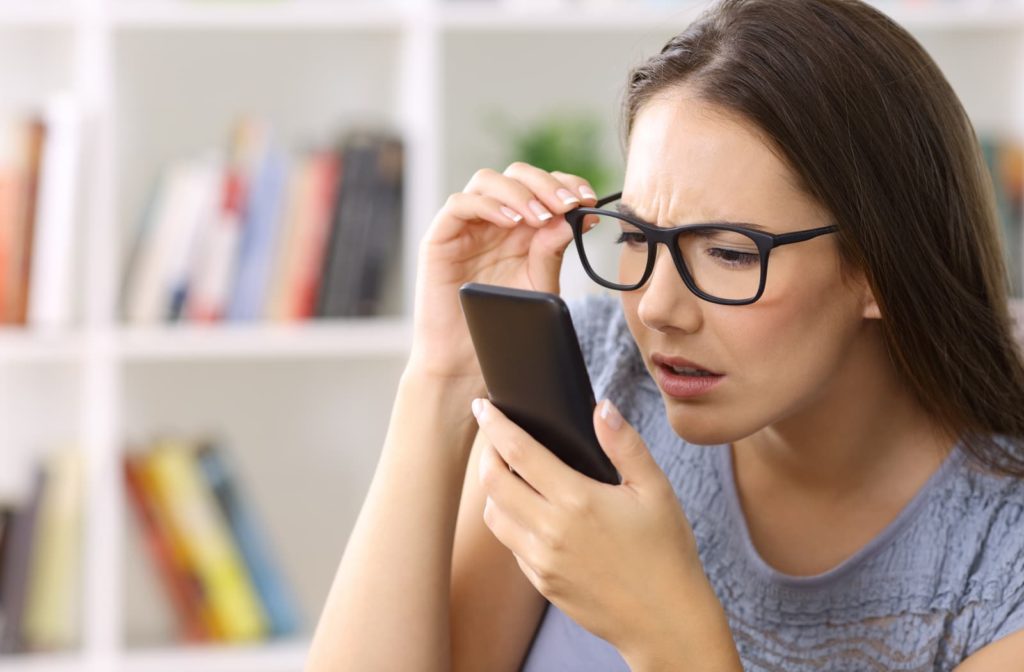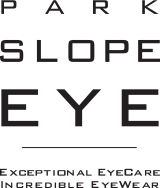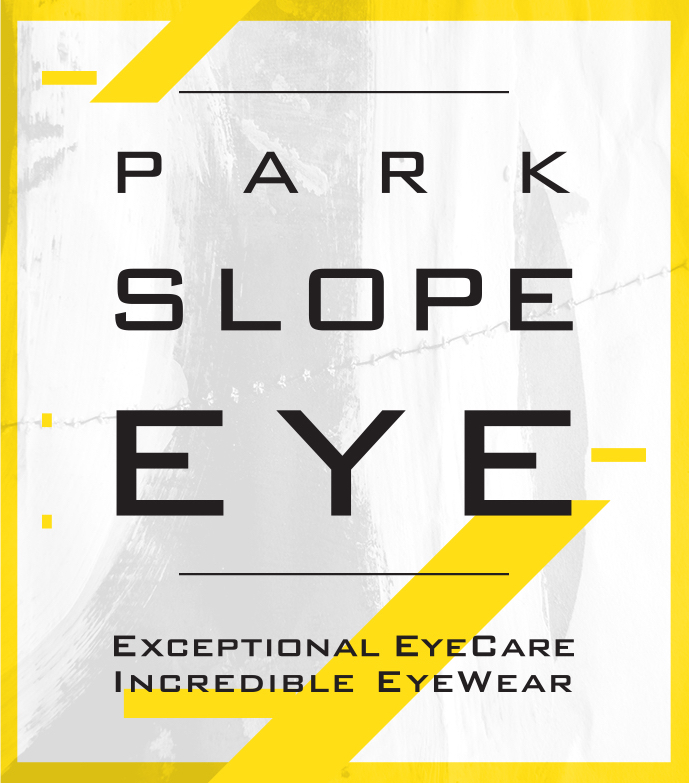Why Do My Eyes Randomly Shake Side to Side?
If you’ve ever noticed shaking or involuntary back-and-forth movements in your own eyes or in someone you know, it may be an indication of an eye condition known as nystagmus. The involuntary eye movements associated with nystagmus can vary in intensity and duration, leading to blurred vision and, in some cases, difficulty focusing on stationary objects.
Living with nystagmus can impact your vision, balance, coordination, and depth perception. An eye exam from your optometrist can help diagnose nystagmus, determine the root cause, and recommend a treatment option right for you.
A visit to Park Slope Eye can help reduce the effects nystagmus can have on your daily life.
What is Nystagmus?
Nystagmus is a condition that causes repetitive and involuntary eye movements and can affect either one or both of your eyes. This involuntary movement can have several forms, including up and down, side to side, or in a circular motion.
Nystagmus is caused by a miscommunication between the eye and the brain and affects the way our brains interpret movement signals from the eye. Nystagmus is typically caused by brain injuries and is a result of brain damage. This eye condition may be referred to as “dancing eyes” because of the repetitive eye movement.
Types of Nystagmus
Nystagmus can be divided into 2 main types, congenital nystagmus and acquired nystagmus.
Infantile or Congenital Nystagmus Syndrome (INS)
INS (a type of nystagmus usually diagnosed during infancy), is sometimes called “early-onset nystagmus”. This type of nystagmus typically causes the eyes to move back and forth horizontally, much like a pendulum.
This form of nystagmus is typically mild and is not always caused by an underlying health condition. It does not always require treatment but some people choose to use corrective lenses or undergo corrective surgery. Though scientists are still not sure why exactly this form of nystagmus develops, this condition may be genetically linked to albinism.
Acquired or Acute Nystagmus
Acquired or acute nystagmus can be caused by injury or disease and can develop at any age. This form of nystagmus is typically linked to problems with the inner ear or brain.
Unlike INS nystagmus, this form of nystagmus is typically caused by an underlying condition such as a stroke, drug use, multiple sclerosis, or a head injury. Some forms of acquired nystagmus can be treated using medication or surgery.
What Causes Nystagmus?
A variety of factors can cause nystagmus, and depending on the form can either be present from birth or can develop over time. Some of the causes of this eye condition may include:
- Genetic factors.
- Albinism.
- A head injury
- Brain inflammation, particularly if it occurs in regions responsible for eye movement.
- A stroke.
- Some medications, including seizure medication and sedatives.
- Excessive alcohol use.
- Problems or disorders associated with the inner ear or brain.
Symptoms of Nystagmus
If you suspect that you, or someone you know, may be suffering from nystagmus, you should make an appointment with an optometrist as soon as possible. Your optometrist will be able to run a variety of tests to diagnose your condition accurately, and then suggest appropriate treatment or management strategies.
Symptoms of nystagmus include:
- Uncontrolled eye movement. This movement is unpredictable and may cause your eyes to move slowly, then quickly, and then slowly again.
- Vision problems. Depending on the root cause of your nystagmus, you may experience vision problems. Some patients can see clearly, while others may experience vision problems either regularly or under certain circumstances (such as when they are feeling stressed or anxious).
- Dizziness. Some patients report feeling dizzy all the time, while some only experience bouts of dizziness.
- Reduced depth perception or balance issues. Some patients report not being able to accurately judge visual distances or have poor fine motor skills, and some patients may experience problems with their balance or coordination.
- Focusing issues. Nystagmus may affect your ability to focus on objects clearly or smoothly shift your gaze from nearby to far away objects or vice versa.
- Head tilting. Some patients with nystagmus frequently tilt their heads in an effort to improve their vision and see objects clearly.
Nystagmus, in itself, can also be a symptom of another underlying condition such as stroke, multiple sclerosis, or trauma. The best thing you can do to safeguard your vision is to undergo regular eye exams so that conditions such as nystagmus can be diagnosed and treated or managed as quickly as possible.

Diagnosing & Treating Nystagmus
Diagnosing Nystagmus
Nystagmus can be diagnosed using a comprehensive eye exam. During the exam, your optometrist will discuss your current health, ask about any medications you are currently taking, and ask you about any external factors that may be affecting your vision.
If you are diagnosed with nystagmus, your optometrist will typically send you to your family doctor so you can undergo further testing. Acquired nystagmus is almost always caused by an underlying condition, while Congenital nystagmus is caused by genetic factors. To help you get an accurate diagnosis, your family doctor may send you for an MRI, or a CT scan.
Once the root cause of your nystagmus has been determined, your doctor and optometrist will work together to determine how your condition can be managed or treated.
Treating Nystagmus
Which treatment is best for your nystagmus depends on the root cause of your condition. If your nystagmus is caused by another underlying condition, then treating that underlying condition should treat your nystagmus as well. Once your nystagmus has been diagnosed, your optometrist or ophthalmologist will suggest an appropriate treatment.
Congenital nystagmus cannot be treated, but it may be managed using glasses or contact lenses, or by ensuring your workspace is well lit. This form of nystagmus will typically disappear as your child grows, but more severe cases may require surgery to reposition the muscles responsible for eye movement. This surgery is not a cure for nystagmus, but it can help improve your child’s vision.
Acquired nystagmus may be treated using a variety of methods. Which method is right for you depends on the root cause of your condition.
Treatment and management methods include:
- Switching your medication.
- Taking prescription medication, such as anti-seizure medications or muscle relaxants.
- Giving up alcohol.
- Using antibiotics (if your nystagmus is caused by an ear infection).
- Wearing glasses or contact lenses.
- Wearing specialty glasses outfitted with prism lenses.
- Undergoing surgery.
Living with Nystagmus
Nystagmus can seriously impact your, or your child’s, quality of life. For instance, some patients with nystagmus find that their condition prevents them from driving, inhibits their ability to perform personal care tasks, or limits their ability to perform certain jobs. However, with time and the right support, many patients learn to live with nystagmus and minimize its impact on their daily lives.
There are also a variety of steps patients can take to limit the effect nystagmus has on their lives. Some patients wear hats or sunglasses indoors to reduce glare or depend on or magnifying aids so they can read small text. Many books are also available in large text formats, and word size can easily be adjusted on most phones, tablets, and computers.
If you or your child is living with nystagmus, there are ways to minimize its impact on your life. Your optometrist can help you get the proper diagnosis and treatment for nystagmus.









